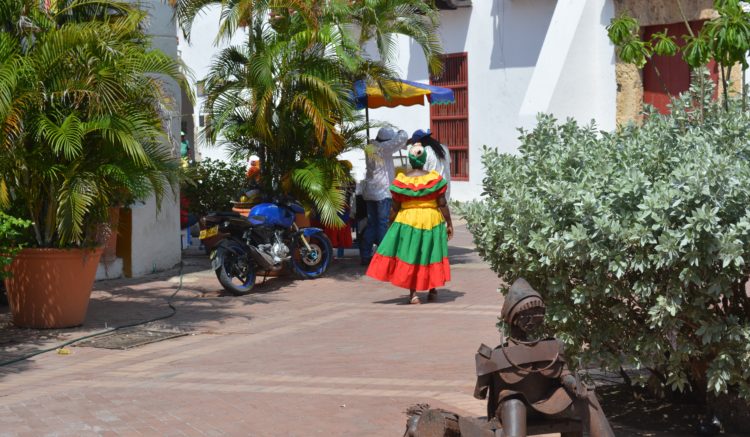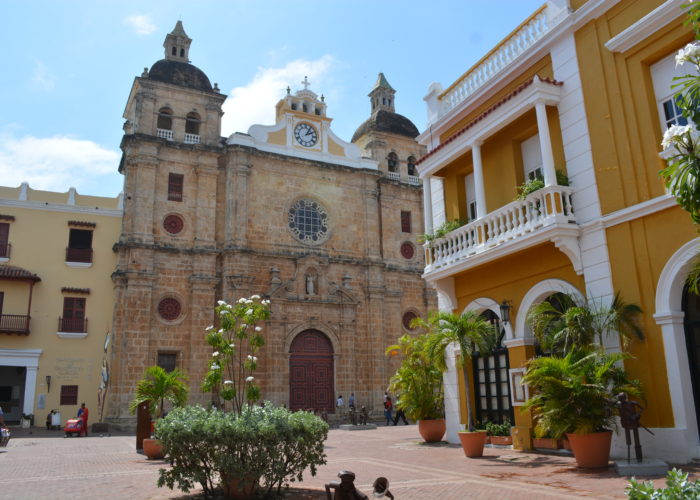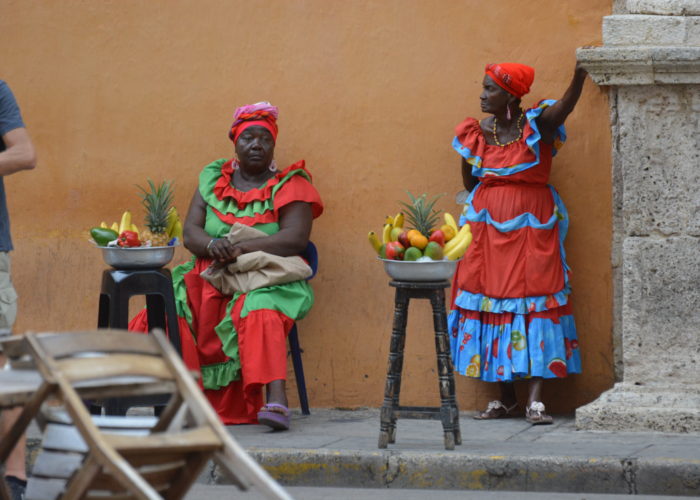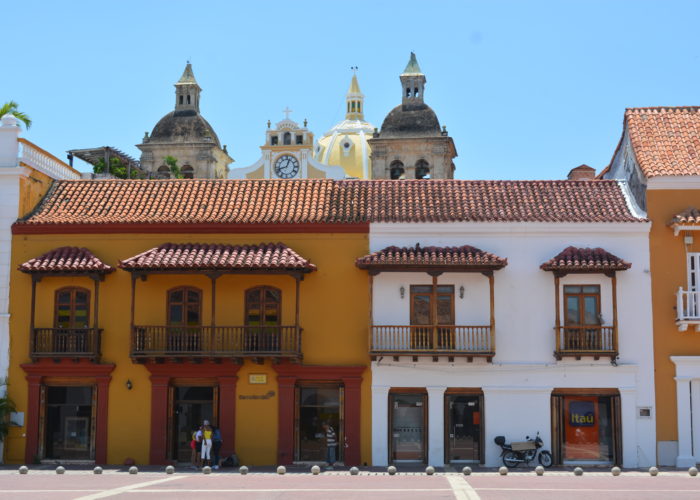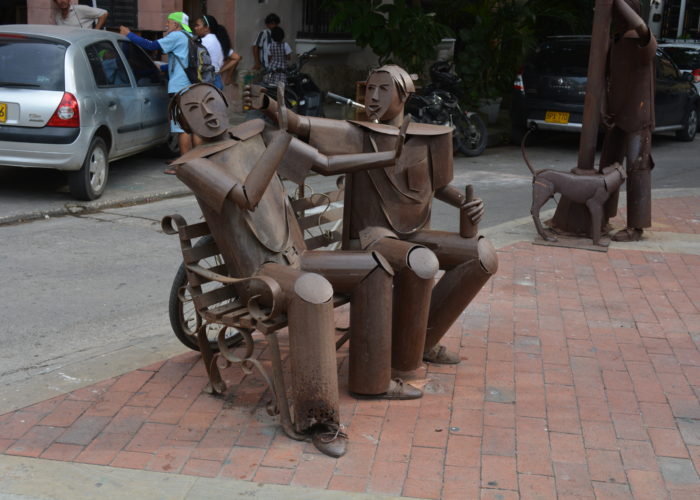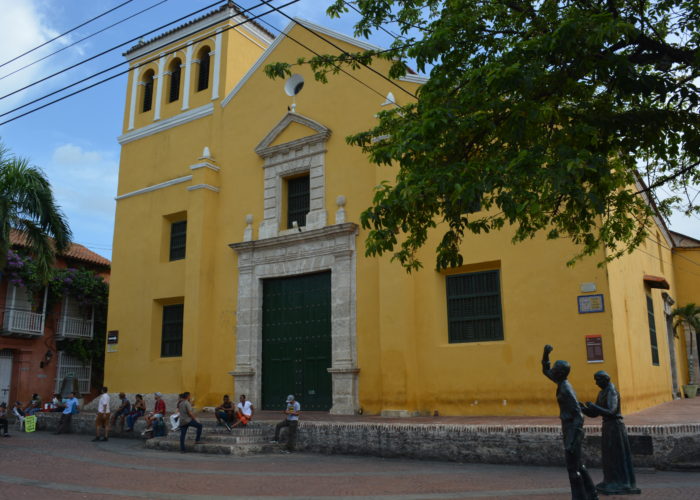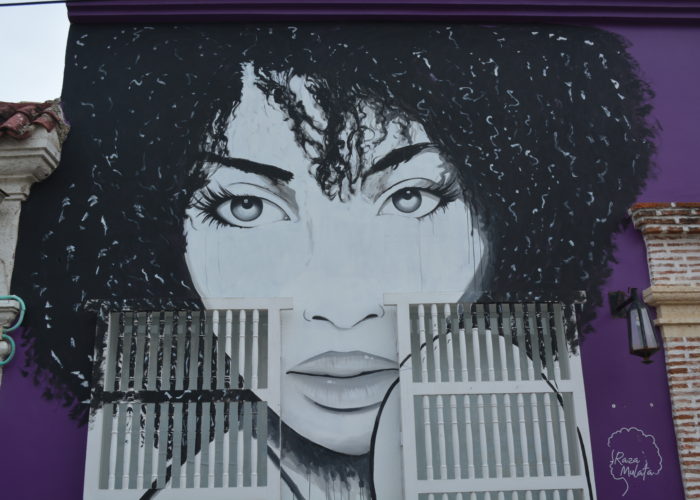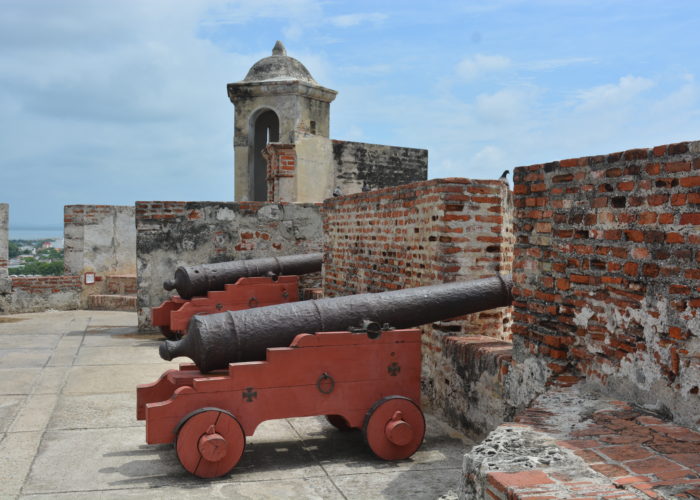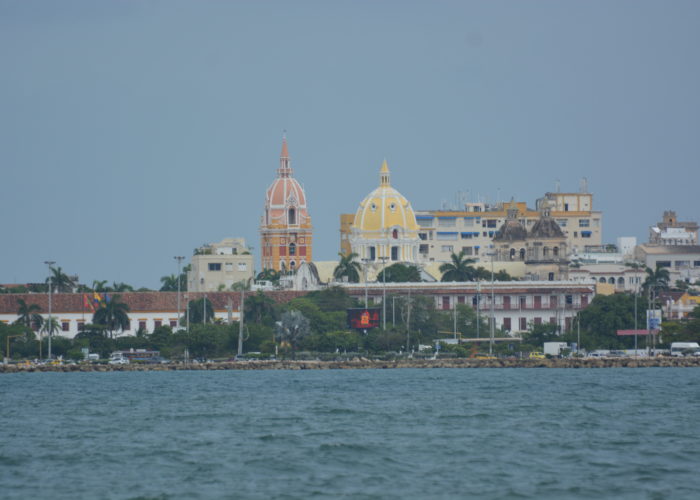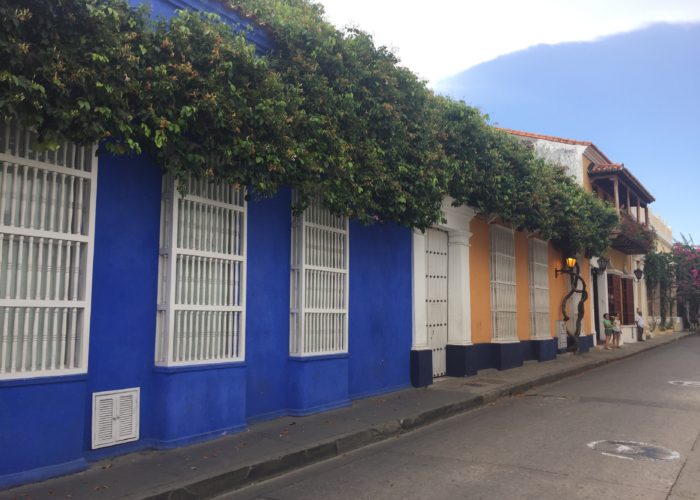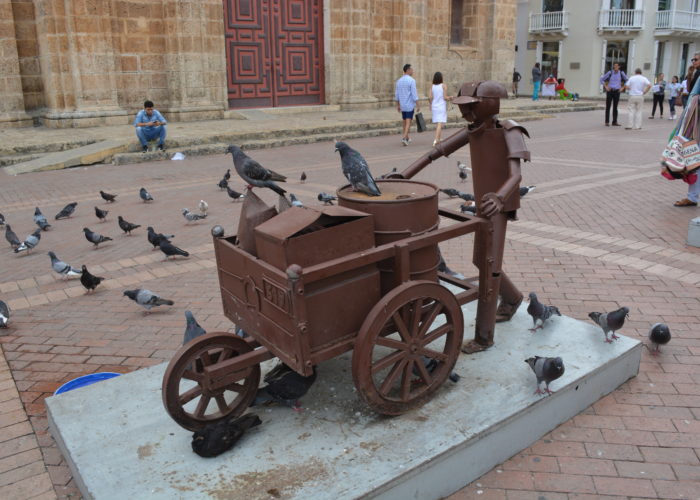After a long bus journey from Medellín we arrived in Cartagena on the Caribbean coast to complete the South American leg of the Pan American Highway all the way from the end of the world at Ushuaia to the heat of the Caribbean.
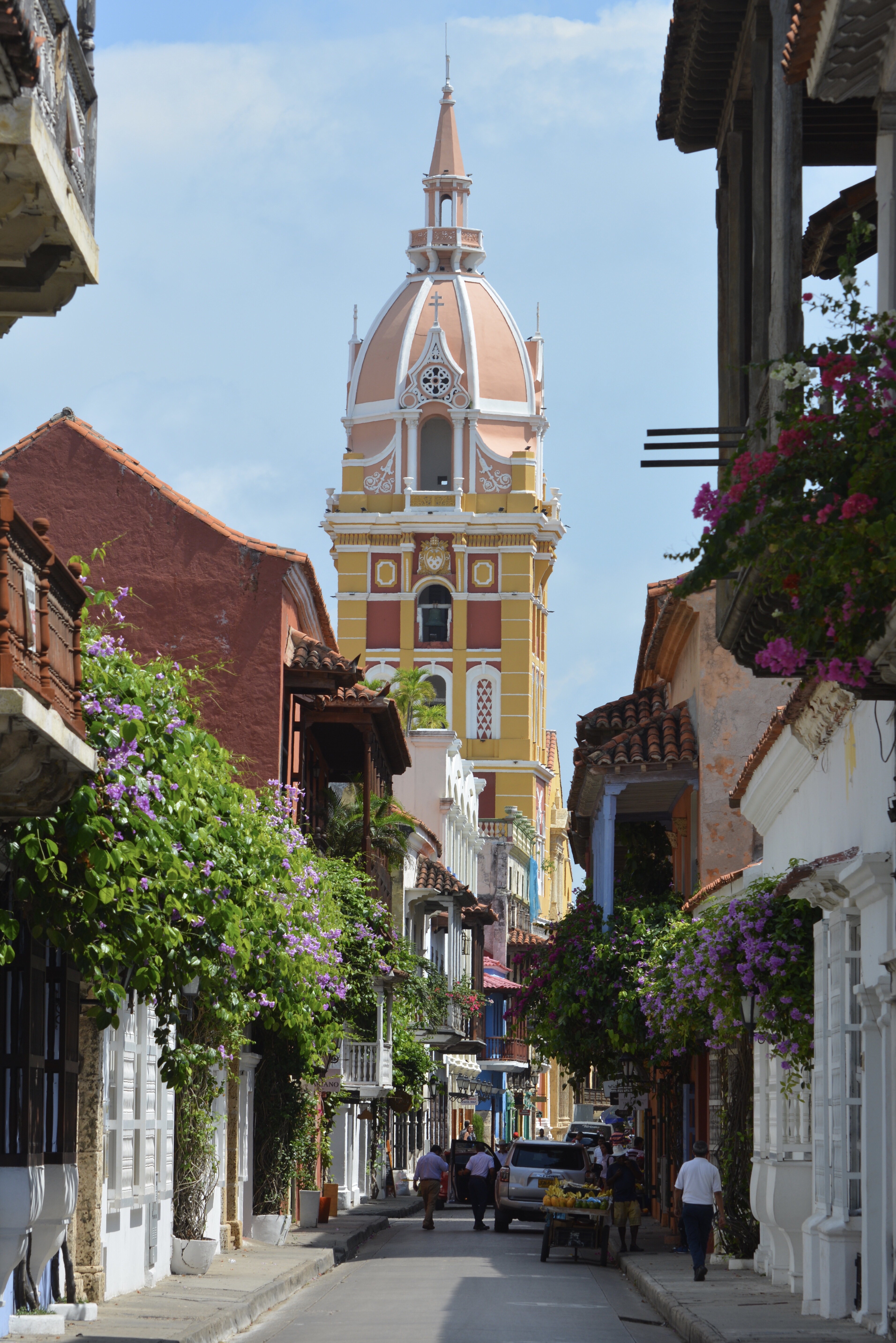
Cartagena is in many ways the jewel of Colombia and probably South America’s premier colonial town. This is our third visit to Cartagena and in particular since 2016 it has become even more attractive. Pretty much every colonial building within the city walls has been gentrified into a boutique hotel, restaurant or shop that services the burgeoning tourist industry. Outside the city walls is still very much a working Colombian City, though the high rises in Bocagrande cater for the well healed Colombian elite.
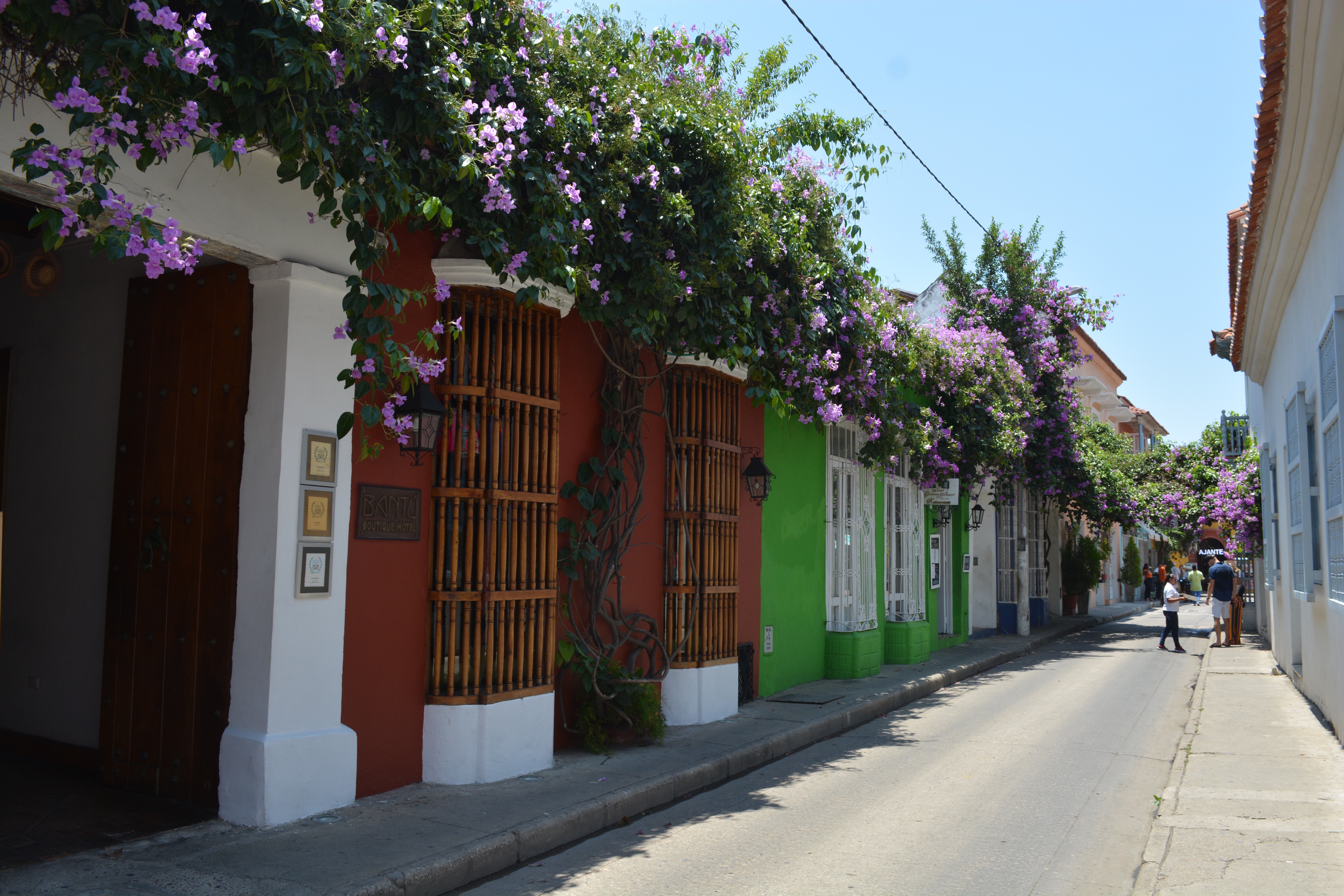
The city is a colourful riot of old buildings in a mixture of pastel colours, with contrasting balconies and flowers. The streets themselves are narrow, providing shade from the hot sun and reasonably free of traffic. Most of the day to day economic activity being outside the walled city. The walls are largely complete and surround the city. These were built to defend the city from the British, Dutch and French pirates looking to to attack and rob the Spanish galleons of gold and silver. Interestingly the local population are largely ambivalent to the pirates, as the Spanish, with their inquisition and other controls in the name of religion were also responsible for a fair number of atrocities too. The Palacio de la Inquisión was the centre of the Inquisition and tells its gruesome story in Cartagena.

Sitting just outside the walled city is the Castillo San Filipe de Barajas, a huge fortress standing guard over the whole city. The walls are several metres thick and ably served their purpose in defending the city from attack.

Cartagena is well set up to earn a good income from tourism and is a key destination for Caribbean cruise liners. The cruise liner passengers one on shore for a day, complete with their giveaway badges and attract many a local entrepreneur tying to sell them anything from the usual tourist tat to Colombian emeralds – though it has to be said that the quality of emeralds has declined as supply has diminished. Also making an income from tourism are the colourful fruit sellers that dress up in their uniform dresses in the three colours of the Colombian flag of red, blue and yellow bands or those of the city that swap the blue for green. For a few Colombian Pesos they will elegantly pose for photographs against a pastel coloured wall with a tray of colourful fruit balanced on their heads. On the days when cruise ships don’t visit there is an oversupply but these ladies make a lovely spectacle and for what it’s worth earn their few pesos for adding to the colour and vibrancy of the city.

On top of the city walls facing out to the Caribbean has to be one of the best located bars in the whole of South America. One of the turrets is used as a bit of a cave where the local DJ plays reggaeton, Colombian or international pop. Drinking a bottle of beer or one of the rum based cocktails watching the sunset over the Caribbean is a very pleasant way the spend the early part of the evening.
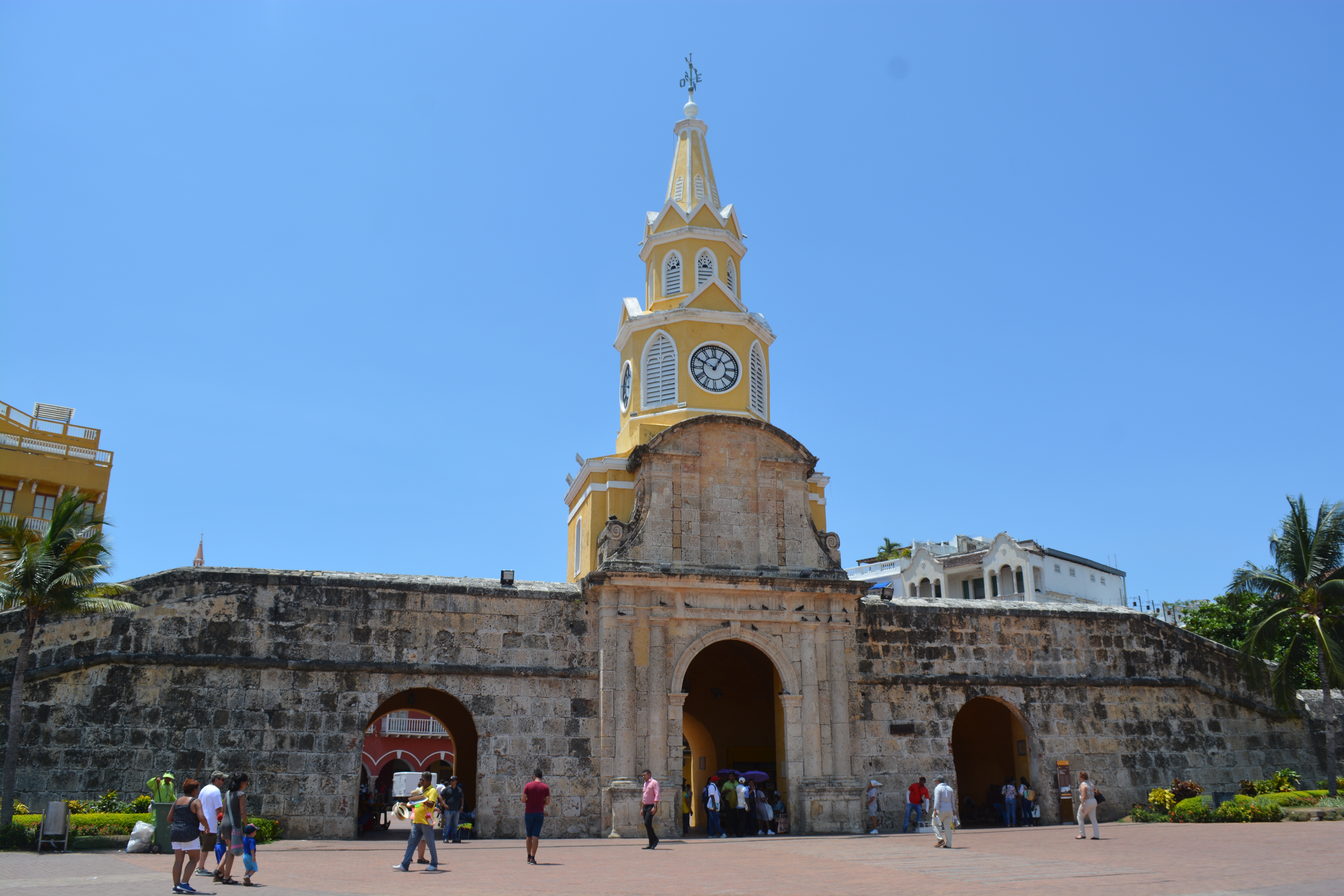
The beach at Bocagrande has been cleaned up quite a lot and attracts a lot of local visitors, though the really top quality beaches are further out of the city at Isla Rosario and the other islands a small boat trip from the city.
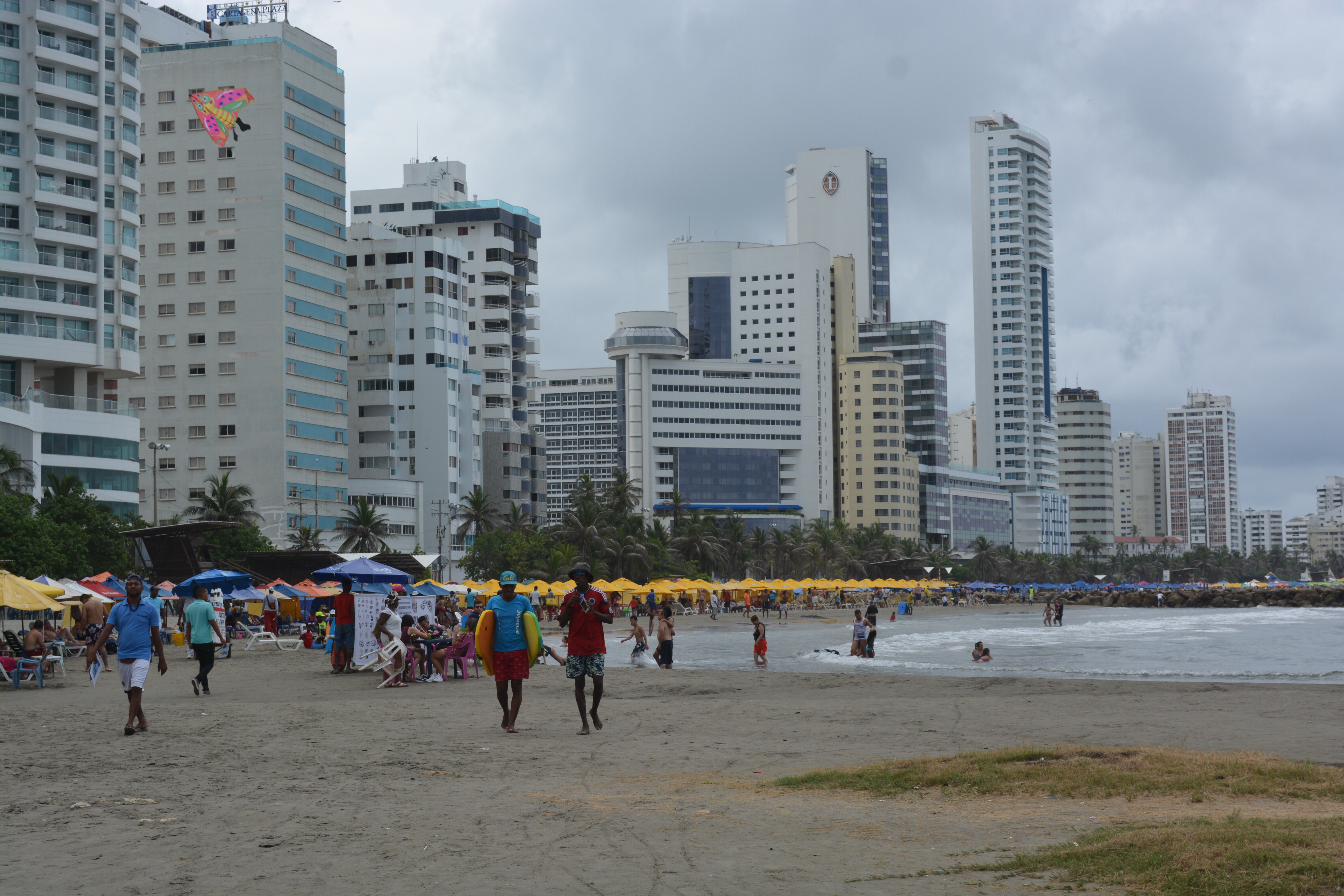
The Getsemani area on the other side of Avenida Venezuela which splits the old city in two is traditionally the more working class area and in someways the most atmospheric part of Cartagena. Traditionally the wealth of the area diminished as one moved away from the Clock Tower and the main cathedral. Getsemani has not been fully gentrified and has a number of more traditional hotels and bars and also many more homes as opposed to commercial buildings. Thus the area has a different feel and is a nice little escape from the busy tourist centres of the old town. There is also some street art, but since our visit in 2016 some of that has fallen into disrepair, probably as a consequence of the continuing gentrification of the whole old town.
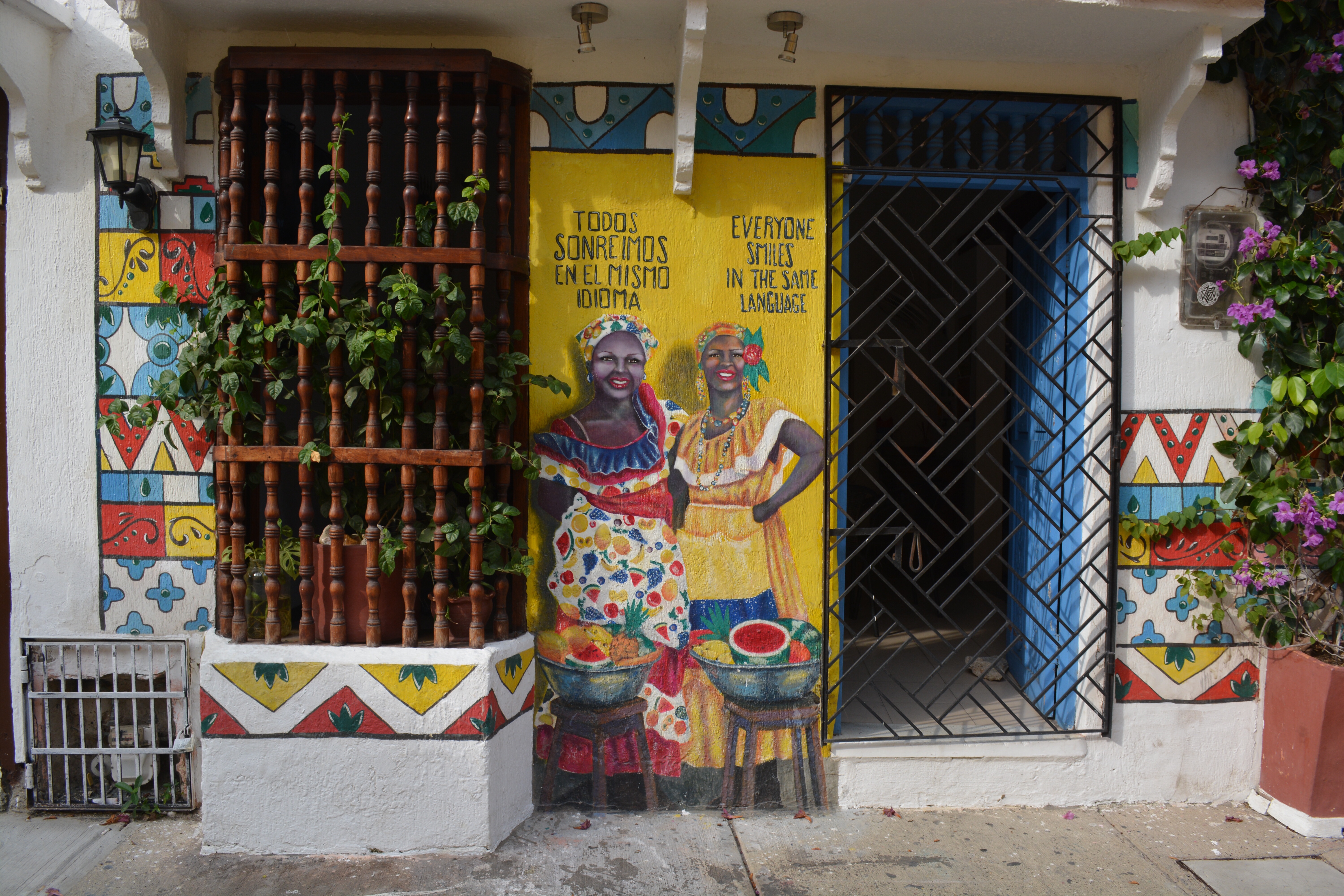
Cartagena is undoubtedly the jewel in Colombia’s tourism industry and unlike the rest of the country which principally attracts independent travellers in their 20s and 30s, also attracts a number of much wealthier visitors in addition to cruise ship day trippers. Overall it is a wonderful photographic location and a gem to simply wander around and explore without any hassle.
Date: 11/09/2018 to 16/09/2018
